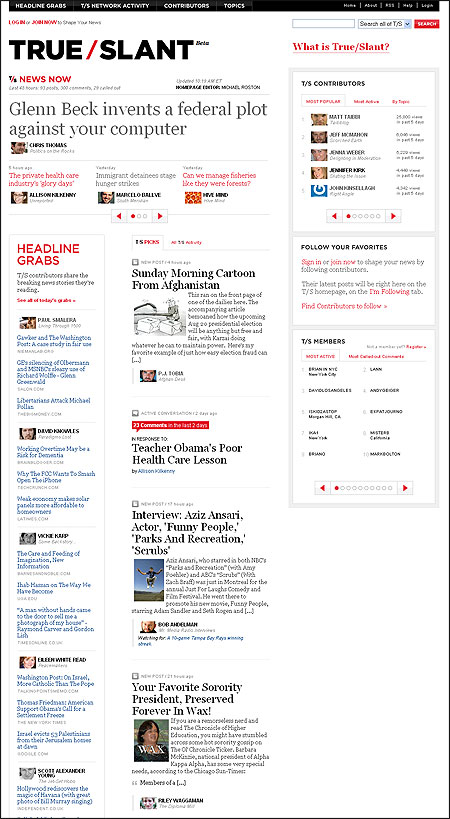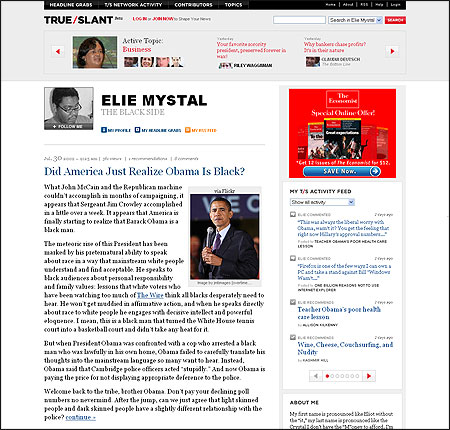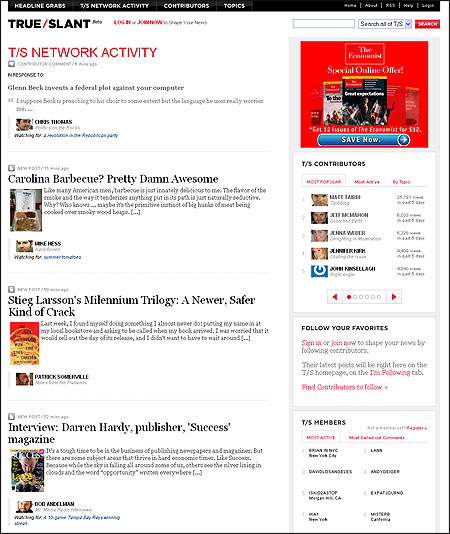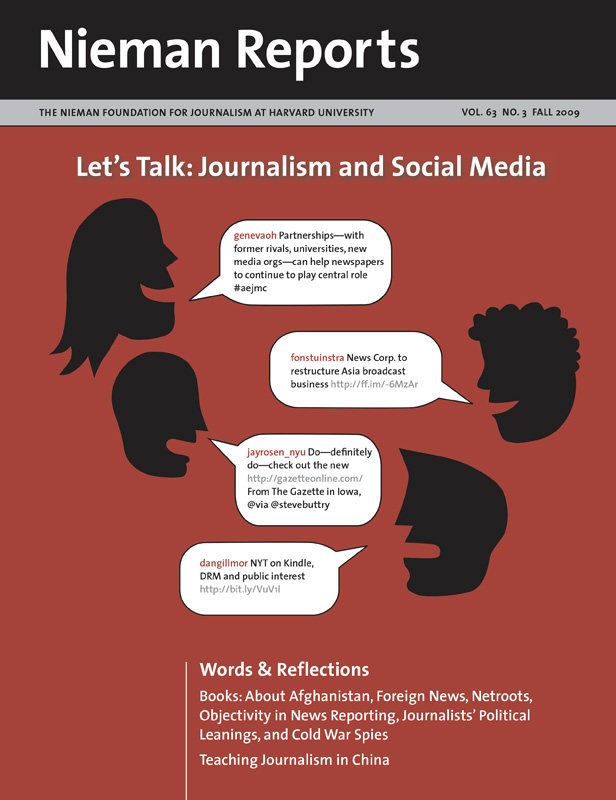I love the newsroom, both in real life and the movies. I remember my wire service days, ripping copy line by line from a manual typewriter to get it quickly to the slot man. I spent many exhilarating nights at The New York Times, Newsweek and The Wall Street Journal editing breaking stories on deadline. And nothing was crazier than my stint in a tabloid TV newsroom.
An original “one sheet” movie poster of “All the President’s Men’’ hangs in my office. To this day, the final scene in The Washington Post newsroom makes me quiver. With power, authority and trust, a Teletype machine swiftly bangs out, one keystroke at a time: “Nixon Resigns. Gerald Ford to become 38th President at noon today.”
All those glorious newsroom days are gone—forever. The rapid transition to a digital news world challenges every journalistic structure, process and delivery system that served the public interest so well for so long. Bold ideas for news organizations once came from Henry Luce, Bill Paley, and Ted Turner. Today, the once invincible media elite appear paralyzed, left sheepishly to ask, “Who’s going to produce the news if we don’t?”
Well, everyone is—old brands, new brands, Twitter, Flickr, anyone with a digital device.
Media extinction comes slowly. Newspapers and magazines, television and radio news are here for years to come. But innovative, ambitious organizations will emerge with vastly different concepts for lower-cost newsrooms and content generation. They will dramatically redefine long-standing relationships between content creators, the audience—and marketers, too. To engage passionate news consumers, news operations must unite the values and standards of journalism with the dynamics of the Web and the connective power of social media.

News of the moment, contributor perspective, and social media come together on the True/Slant homepage.
Editing Talent, Not Words
True/Slant, an original content news network, is building the “newsroom of the future.” There are two key components: individually branded content contributors, all linked to one another but really working for themselves, and editors who focus on editing talent, not copy. The result: a news experience and publishing environment shared with the audience that upends both traditional journalism models and more recent digital news experiments.
At its core, the True/Slant news experience is built on knowledge, transparency, authenticity and intimacy. These attributes are vital in a news world that appears split in half: traditional brands on one side, struggling with notions of objectivity and monolithic voice, and upstart digital entrants on the other, careening toward passion-fueled bias in the spirit of openness. True/Slant is honest about its adherence both to truth and slant. It’s a place for diverse multiple viewpoints and for marketers to engage in new ways with passionate news consumers.
It all begins with consumers trying to cope with the flood of news—and confused by whom and what to trust. True/Slant believes consumers want their news created and filtered by credible individuals with topic-specific knowledge. They want a freeflowing news stream, untouched by top-down editorial decision-making. They want a chance to be heard directly alongside those bringing them the news.
Enter the entrepreneurial journalist. These are credible content contributors who provide information, perspective and insight on targeted news topics. At True/Slant, this person can be a journalist, blogger, author, expert or academic, and each is carefully selected by our newsroom’s editors, who discuss ideas and work with them to market their content across the Web using custom-designed “playbooks.” Our newsroom is not a journalism bureaucracy that assigns stories, line edits, copyedits or acts as a gatekeeper. True/Slant editors are facilitators, not gatekeepers. Free to publish information as they see fit, entrepreneurial journalists write for the audience, not the editor. Their flow of content is timely, transparent, expert and passionate.
Miles O’Brien, a former CNN anchor, brings his aviation and space expertise to his True/Slant audience. F. Paul Wilson, a best-selling author and physician, examines scientific and health-care myths for his followers. Ryan Sager, a newspaper columnist, explores neuroscience. Jennifer Kirk, a former World Junior Champion figure skater, exposes the inner workings of that elite sport.
True/Slant has nearly 200 contributors. Rather than a static employer/worker model, True/Slant contributors can determine the financial arrangement that best suits them. Options include monthly stipends and incentive plans based on audience growth for their content. Some contributors have been granted equity in True/Slant.
In effect, each contributor is a brand of one, with a unique voice, strong perspective, and an audience drawn to what they publish. As the owners of their brand, they can act as CEO, publisher or content creator. It’s their choice. True/Slant holds no exclusivity in what they do. In fact, our model is built on the idea that an entrepreneurial journalist has a multifaceted career. O’Brien writes and produces video for other Web sites; Wilson writes books and treats patients; Sager writes a New York Post column; Kirk is a student at UCLA.

As an entrepreneurial journalist, True/Slant contributor Elie Mystal publishes under his own name and brand. He, along with almost 200 other True/Slant contributors, uses social media to help build an audience around his specific area of expertise.
Creating a Digital Home
On True/Slant, contributors anchor, consolidate and build their digital home. Social media is one of its cornerstones. From this home, they produce original content on True/Slant, but they also promote and link to work they do elsewhere via the easy-to-use self-publishing and social media tools that we provide. They blend their perspective and reporting with content they curate—creating links to online words and video—and with commentary they encourage their audience to produce. And because entrepreneurial journalists need to understand their audience and their business, when they log on to our platform they get important real-time data: unique visitors, page views, blogs and sites pointing to their content, and new user comments.
The True/Slant news user and the contributor form a bond through social media. Contributor content is followed, accepted, rejected and corrected by the audience. Those who write for True/Slant share their daily news consumption with their audience, and they manage conversations and market themselves virally online through Twitter, Facebook, reddit, Digg and ties they have with blogs and Web sites.
On our site, contributor and audience-generated content is commingled, enabling contributors and users to interact within a network—a sort of news democracy—that encourages cross-talk among contributors and readers and participation across contributor communities.
This type of collaborative dialogue opens the door to unique opportunities for advertisers looking for more effective ways to engage with news audiences. Yes, advertisers can buy display advertising on True/Slant, but marketers can also speak with True/Slant consumers through the T/S Ad Slant. With this option, a marketer can publish content to their own page using the same tools as contributors. Clearly labeled as advertising, this content is contextually integrated throughout the site, enabling marketers to participate in news related to them and the social news conversation. All along the way, the integrity of the news process remains intact.
For me, True/Slant is an idea 35 years in the making. I do miss those newsrooms with all the grizzled journalists who loved what they did and who taught me so much. But news can now be so much more than it was. True/Slant brings fresh thinking to an industry that is reeling. I can’t imagine anything more exciting than helping lead the news business into the future.

True/Slant provides a continuous live stream of activity across the network, blending new posts, contributor comments, called-out user comments, and active conversations.
Lewis DVorkin is the founder and CEO of True/Slant. He was a senior vice president at America Online in charge of news, sports and network programming and helped launch TMZ.com. He held top editing positions at The New York Times, Newsweek, The Wall Street Journal, and Forbes.


